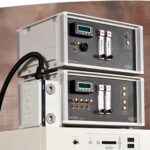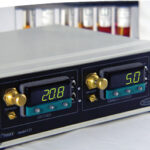Cytocentric Visionaries: Dr. Heather O’Leary
Part Two: The Technical Challenges of Working in Physiologic Oxygen with Less-than-ideal Equipment
This is Part Two in a three-part series of blog posts from an interview that Dr. Alicia Henn, Chief Scientific Officer of BioSpherix, conducted with Dr. Heather O’Leary. Our conversation was edited for length and clarity.
In Part One, Heather told us about why her work is so exciting. Today, Heather talks with us about practical considerations that might limit researchers wanting to keep their cells in low-oxygen.
Why do you think people don’t control oxygen for their cells more often?
HAO: It requires equipment not everybody has and changes the cells very quickly. We found that it also required a meticulous nature to make sure things are put in the chamber in advance. The pipette tips, the reagents, everything needed to be at 3% for the study to work. And it is so hands-on technically challenging, I think that is part of why people haven’t explored it in an in-depth fashion.
So which was tougher, the preparations ahead of time or the hands-on manipulation?
HAO: The hands-on manipulation, for sure. I see that even now with my summer student. He had one experiment where he was extremely meticulous and it was beautiful and then one where he said “Oh, I’m not sure if that was capped tight enough when we spun it.” That experiment was not nearly as good as the other one. Something little like that can completely change the experimental results and have a negative impact on the effect you see in the experiments.
Are there engineering controls that you could imagine that would eliminate a lot of these issues?
HAO: Conical tubes with seals in them that were really tight so we weren’t paraffin-wrapping everything. The ability to do everything in the chamber and not have to remove cells from the chamber at all, obviously, would extremely enhance the fidelity of the experiment, if nothing else. It gives you a lot less opportunity, as long as you prepared well in advance, to accidentally have a lid come loose or not cap it tight enough, or things like that that are natural human error that may occur during the experiment. Absolutely!
What things other than loose caps may have contributed to variability in between experiments?
HAO: Making sure that things were in the chamber for an extended period of time. Sometimes you realized that you forgot something six hours before you start and everything else had been in there for two days. So you put that in and wonder if six hours was enough. We haven’t done the timeframe experiments to know exactly what is the absolute minimum time needed to have things in the chamber in advance. We also haven’t experimented much with different media or buffers, which may modify the results, for our experiments we used PBS.
We try to incubate everything 24 hours in advance, but even things like the media to air threshold – if you put in 500mls of media versus 50mls of media and you’re shaking it – how well does it come to 3% compared to a whole bottle of media? We don’t have meters for everything. You try to put in the minimum amount of liquid you need to make sure that it is as close as you can get to 3% oxygenated as possible.
It is a challenging prep, especially when you are dealing with patient samples. You are never sure when you are going to get them. You have to keep things in part of the chamber in case we get a cord unexpectedly from an emergency C-section.
How do you handle things like media that need refrigeration over long pre-incubations?
HAO: We put it in there for the minimum amount of time needed, like the night before.
What about growth factors?
HAO: Anything we set-up is put in there the night before except for growth factors and antibodies. Small amounts of liquids (antibodies) can be put in the morning of and mixed. We don’t like to do those more than eight hours ahead of time because we don’t like those to sit longer than they have to. It’s been a trial-and-error thing for us where you put something in and the effect is diminished, so you know that it should have been in there longer.
In Part Three Dr. O’Leary talks with us about low-oxygen terminology and whether or not room air is “good enough.”
If you would like to be considered for a Cytocentric Visionary feature, please contact us here and tell us how your work fits the Cytocentric Principles.
Recent Articles

Cytocentric Visionaries Hal Broxmeyer
Cytocentric Visionaries: Hal Broxmeyer November 27, 1944 ~ December 8, 2021 Hal Broxmeyer telling Randy Yerden about his latest findings in June 2016. The average height of the Cytocentric researcher has been reduced, now that we have lost a giant. Hal Broxmeyer died...

Cytocentric Visionaries: Dr. David Gozal, MD – Part Two
Cytocentric Visionaries: Dr. David Gozal, MD Part 2: COVID-19 Research, Prone Positioning, and Chronoadequacy Alicia Henn, PhD MBA, Chief Scientific Officer, BioSpherix David Gozal, MD, MBA, PhD (Hon) is the Marie M. and Harry L. Smith Endowed Chair and Chairperson of...

Cytocentric Visionaries: Dr. David Gozal, MD – Part One
Cytocentric Visionaries: Dr. David Gozal, MD Part 1: COVID-19, ACE2, and the Circadian Clock Alicia Henn, PhD MBA, Chief Scientific Officer, BioSpherix David Gozal, MD, MBA, PhD (Hon) is the Marie M. and Harry L. Smith Endowed Chair and Chairperson of the Department...
About The Author
Alicia D Henn, PhD, MBA
Chief Scientific Officer of BioSpherix, Ltd
Alicia Henn has been the Chief Scientific Officer of BioSpherix, Ltd since 2013. Previously, she was a researcher at the Center for Biodefense Immune Modeling in Rochester, NY. Alicia obtained her PhD in molecular pharmacology and cancer therapeutics from Roswell Park Cancer Institute in Buffalo, NY and her MBA from the Simon School at University of Rochester in Rochester, NY.
If you would like to be featured in our Cytocentric Visionary Series, contact us. We would love to hear about your work.





































